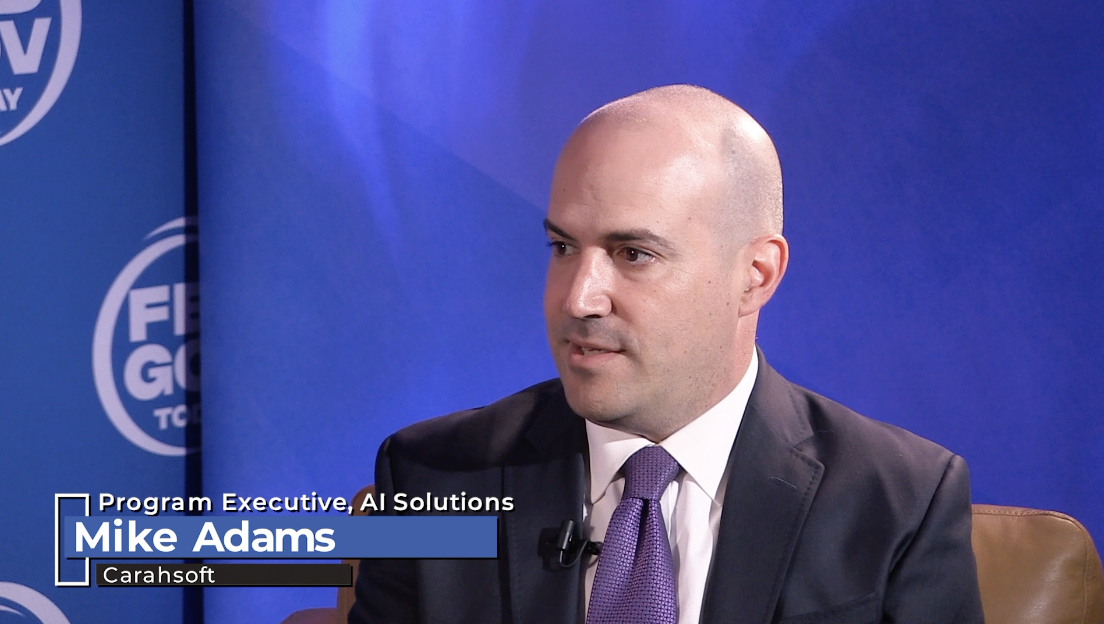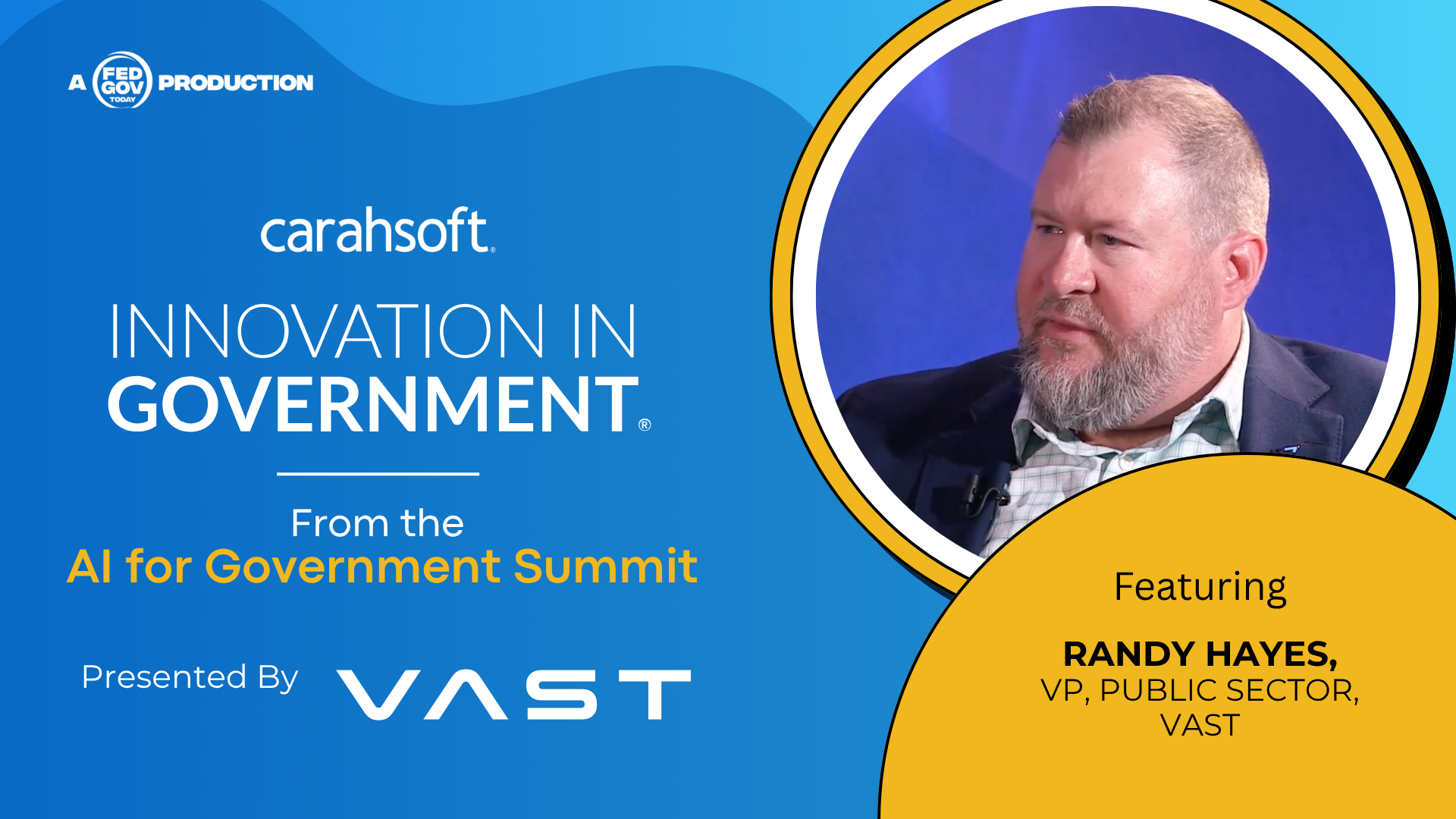Original Broadcast 6/11/25
Presented by Carahsoft
Artificial intelligence is transforming the landscape of federal agencies, but realizing its full potential requires more than just enthusiasm—it demands infrastructure, strategy, and people. Mike Adams, AI Program Executive at Carahsoft, brought this message to the forefront during his conversation at the AI for Government Summit. With years of experience interfacing with both government agencies and technology providers, Adams highlighted that infrastructure is the often-overlooked backbone of any successful AI deployment.
 While some agencies may equate AI infrastructure with powerful hardware like GPUs, Adams stressed that true AI infrastructure includes much more. Cloud architecture, secure data handling, and the human talent to guide and supervise AI applications are equally critical. In his words, “AI-ready infrastructure isn’t just about servers—it’s about creating an environment where AI can be used thoughtfully and effectively to support the mission.” That means incorporating cloud-based systems that can flex and scale with demand, ensuring that data is accessible but protected, and investing in training to build a workforce capable of identifying opportunities where AI can make the greatest impact.
While some agencies may equate AI infrastructure with powerful hardware like GPUs, Adams stressed that true AI infrastructure includes much more. Cloud architecture, secure data handling, and the human talent to guide and supervise AI applications are equally critical. In his words, “AI-ready infrastructure isn’t just about servers—it’s about creating an environment where AI can be used thoughtfully and effectively to support the mission.” That means incorporating cloud-based systems that can flex and scale with demand, ensuring that data is accessible but protected, and investing in training to build a workforce capable of identifying opportunities where AI can make the greatest impact.
A central challenge Adams highlighted is the shift toward agentic AI—autonomous systems that carry out complex tasks. This new frontier isn’t just a step forward; it’s a leap. The compute power required for these models is exponentially higher than previous generations. Adams noted a recent industry conversation where a leading technologist admitted that their projections for infrastructure requirements had been off by a factor of 100. That kind of leap has significant implications for budgeting, procurement, and strategic planning across the federal landscape.
But infrastructure is not just technical. Adams returned repeatedly to the importance of human expertise. “The phrase ‘human in the loop’ still matters,” he emphasized, referencing the long-held belief that AI should support, not replace, decision-makers. In the federal space—where oversight, compliance, and accountability are paramount—having well-informed personnel directing AI initiatives ensures that tools are used responsibly and effectively. For example, AI can be used to flag anomalies in procurement, suggest resource allocations, or support national security planning, but it is people who determine where and how to apply those insights.
The Executive Order on artificial intelligence issued by the Biden administration continues to push agencies to plan and implement AI strategies with infrastructure in mind. Adams explained that while earlier executive actions focused on innovation and experimentation, the current guidance places a clear emphasis on readiness and operational support. Agencies are now being tasked not just with piloting AI tools but with preparing to scale them—responsibly, securely, and sustainably.
Agentic AI, Adams noted, is only the latest chapter. Just as the federal space adapted from machine learning to generative AI, the horizon is already shifting toward physical AI—the integration of artificial intelligence into real-world robotics and embedded systems. Agencies must think not only about what’s needed today but also what will be required 18 months from now, or even five years out. This doesn’t mean freezing until a perfect plan emerges, however. Adams urged agencies to move forward with urgency while maintaining flexibility: “You need to be ready for what’s next, even if you don’t know exactly what it is yet.”
 That readiness includes recognizing that adversaries are not standing still. Global competitors are investing heavily in AI, and many lack the bureaucratic guardrails that slow government innovation. Adams cautioned that speed is becoming a strategic imperative—not just for effectiveness, but for national security. The U.S. government must keep pace not only to remain efficient but also to maintain leadership in global technology development.
That readiness includes recognizing that adversaries are not standing still. Global competitors are investing heavily in AI, and many lack the bureaucratic guardrails that slow government innovation. Adams cautioned that speed is becoming a strategic imperative—not just for effectiveness, but for national security. The U.S. government must keep pace not only to remain efficient but also to maintain leadership in global technology development.
Looking ahead, Adams believes that partnerships between government and industry will be vital. The private sector can offer insights into infrastructure scaling, secure cloud solutions, and the next generation of AI tools. But public agencies must come to the table with clarity about their missions and the outcomes they seek. Infrastructure isn’t just about building a technical foundation—it’s about aligning resources, talent, and governance structures to enable mission success.
As the conversation around artificial intelligence continues to evolve, Adams’ perspective serves as a crucial reminder: the best AI solutions are grounded in real-world infrastructure, built for adaptability, and guided by people who understand the mission. The road to responsible, scalable AI in government starts not with tools, but with readiness—across systems, data, and minds.
Key Takeaways:
-
AI infrastructure must include cloud systems, data pipelines, security, and skilled personnel—not just hardware.
-
Agentic AI demands significantly more compute resources and planning than previous generations.
-
Agencies must act with urgency, guided by mission clarity and supported by strategic partnerships.
This interview was featured in the program Innovation in Government recorded on location at the Carahsoft AI for Government Summit. To watch the full program, click here.



